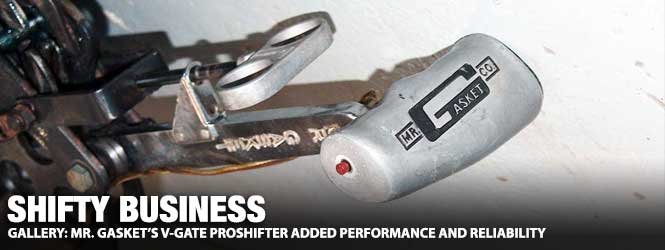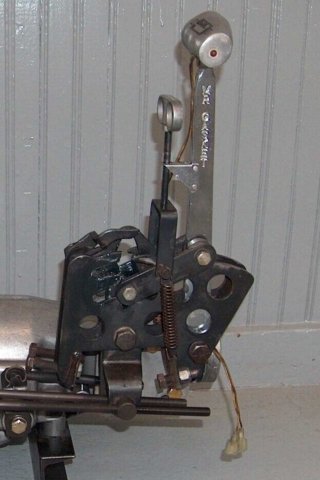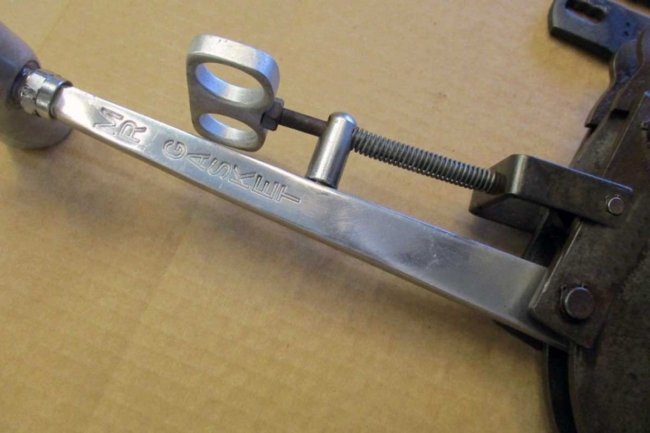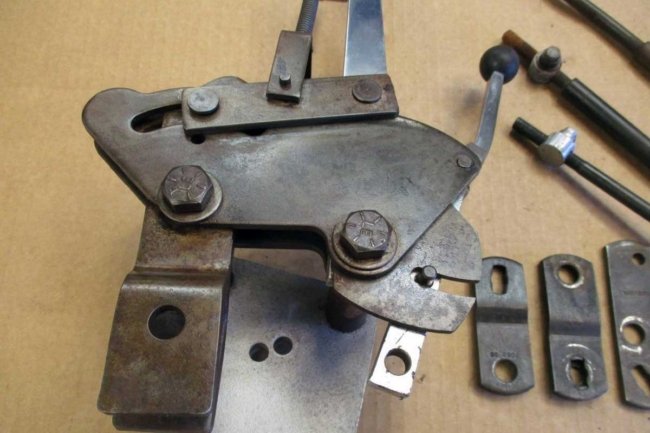
During the muscle car period, having a ride equipped with a 4-speed manual transmission got everybody’s attention. By adding a Mr. Gasket Co. ProShifter vertical-gate (v-gate) shifter, your street cred rose to the stratosphere. The ProShifter virtually guaranteed that a missed shift was a thing of the past.

Above: Mr. Gasket ran its ProShifter advertisement in the May 1972 Car Craft magazine. The v-gate design and the Stage-Lock T-handle guaranteed a quick and secure shift every time.
Mr. Gasket sold heaps of ProShifters during the ‘70s and ‘80s. The shifter lever moved about 2 ½ inches forward and backward. There was no side-to-side movement, hence, no crossover H-gate pattern. When a shift was desired from first gear, the shifter handle was quickly yanked into second to ensure the gear change was successful.
The v-gate pin mechanism could drop into fourth gear if the shift was slow. The second to third gear was a shove of the shifter handle forward, and fourth gear was a pull back. The third and fourth gear shifts could not be missed because of the v-gate design. For reverse, the shifter was placed in neutral, and then a separate reverse lever was engaged.
Above Left: The ProShifter was engraved along the shifter lever with Mr. Gasket’s brand. The two-holed gate handle pulled the shifter back into first gear. Above Center: The unique v-gate design allowed the shifter lever to move forward and rearward for each shift. There was no crossover; pull and push did the job. The lever at the far left is the reverse lever. Above Right: The opposite side of the shifter displays the heavy-duty hardware that kept the unit together.
The setting up of the ProShifter was simple. The shifter rods were adjusted to engage the New Process A-833. Next, a pin was installed into the shifter. The pin was adjusted to fit precisely into the v-gate shifter slots. Due to the tight fit between the v-gate pattern and the engagement pin, the shifting felt tight but positive; there was absolutely no slop in the linkage.
On the track, and sometimes on the street, it was not uncommon to hear the whine of a Mopar small block screaming well past 7500 rpm only to be broken momentarily by a beautifully executed shift, to repeat the process two more times.

Above: Another shifter shows the v-gate more clearly. The linkages and the stop bolts were fully adjustable. The Stage-Lock button and wiring can be seen.
Anyone who drove a car with a ProShifter developed the most muscular middle and ring fingers in their town. They constantly had to pull up the gate every time they engaged first gear, which added to the Mr. Gasket ProShifter mystique.
According to a 1972 Mr. Gasket advertisement, a Stage-Lock (aka line-lock) button was added to a Mr. Gasket T-handle atop the shifter lever. The Stage-Lock eased the staging process and kept the 4-speed vehicle from rolling out of the staging beams. The button was at the end of the T-handle, positioned where the driver’s thumb could depress it. With a quick flick of the thumb at a flash of green, the button would release as the driver dropped the clutch, resulting in a fury of rapid acceleration.
Above Left: The Stage-Lock button is more easily noticed in this photograph. The gate lever required some middle and ring finger strength to pull it up to reengage first gear. Above Right: Mr. Gasket’s logo was proudly displayed on the T-handle. It let onlookers know a wickedly good shifter was in the hand of a skilled driver.
In 1964, Joe Hrudka started the now-famous Mr. Gasket company. Through his drag racing success, Hrudka established Mr. Gasket as a go-to source for gaskets, including head, exhaust, and oil pan gaskets, along with fasteners designed to withstand the rigors of racing.

Above: There was no need to put a shifter boot over the ProShifter. It was just poked through the floor and left uncovered so all could see its beauty and admire its performance potential.
Hrudka sold the company to Grace & Co. in 1971, but after a decade of mismanagement, Hrudka re-purchased Mr. Gasket at a discounted price. Mr. Gasket’s catalog grew considerably from 1981 to 1985, and the profits accordingly increased. However, by 1988, Mr. Gasket suffered its first of several years of decline. By 1991, Mr. Gasket filed for bankruptcy and was subsequently purchased by Echlin Inc. in 1993.
Above: The Mr. Gasket Co. is now part of Holley Performance. The company continues to produce quality gaskets and fasteners, but it has expanded into exhaust, fuel systems, cooling components, driveline parts, dress-up accessories, and specialty tools.
After bouncing through different owners over the succeeding years, Mr. Gasket was eventually acquired by Holley Performance. Under the Holley umbrella, Mr. Gasket again has an extensive catalog, including high-performance parts, fuel system products, fuel additives, shifter accessories, cooling system components, chrome-plated dress-up parts, suspension and driveline components, specialty tools, and gaskets.






















Too huge. Floorboard mod required for install.
The inline shifter of the era to have is the Hurst Ram Rod shifter. Same footprint as a competition plus Hurst. Reverse lockout.
I had one of these in a ’70 340 Cuda back in the day. It looked badass and performed well.